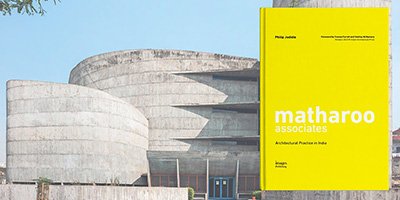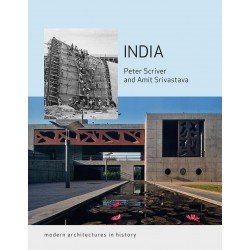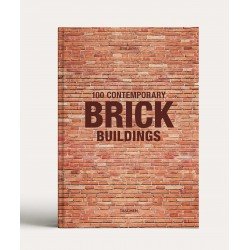
- Stock: In Stock
- Author: Peter Scriver, Amit Srivastava,
- Weight: 850.00g
- Dimensions: 6.75in x 0.90in x 8.75in
- SKU: B0D7WBJM98
- ISBN: 9781780234373
"INDIA Modern: Architectures in History" invites readers on an illuminating journey through the dynamic landscape of Indian architecture, spanning centuries of artistic evolution and cultural transformation. This comprehensive volume delves deep into the intricate tapestry of styles, influences, and innovations that have shaped India's architectural identity, from ancient marvels to contemporary masterpieces.
Discovering India's Architectural Heritage
India, a land renowned for its diversity and cultural richness, boasts a heritage steeped in architectural brilliance. From the ancient civilizations of the Indus Valley and the magnificence of Buddhist stupas to the exquisite craftsmanship of Mughal monuments and the bold experiments of modern architects, every era has left an indelible mark on the architectural canvas of the subcontinent.
Ancient Marvels and Traditional Influences
The journey begins with India's ancient architectural marvels, where craftsmanship and spirituality converged to create enduring symbols of cultural and religious significance. The rock-cut temples of Ellora and Ajanta, with their intricate carvings and monolithic structures, stand as testament to the ingenuity of early Indian architects. Meanwhile, the temple complexes of Khajuraho and Hampi showcase the architectural prowess and artistic expression of medieval India, blending religious devotion with aesthetic sophistication.
The Mughal Era: Synthesis of Cultures
The Mughal era ushered in a period of unparalleled architectural grandeur, characterized by the fusion of Persian, Islamic, and Indian architectural styles. Under the patronage of emperors like Akbar, Shah Jahan, and Aurangzeb, iconic monuments such as the Taj Mahal, Fatehpur Sikri, and the Red Fort were constructed, each embodying the Mughal penchant for symmetry, geometric patterns, and intricate ornamentation. These structures not only served as royal residences and centers of governance but also as enduring symbols of love, power, and cultural synthesis.
Colonial Encounters and Architectural Assimilation
The arrival of European colonial powers in India during the 17th century marked a pivotal juncture in the country's architectural evolution. British, Dutch, Portuguese, and French influences began to shape urban landscapes, resulting in the emergence of colonial-era buildings, churches, and administrative centers across the subcontinent. The Indo-Saracenic architectural style, characterized by its synthesis of Indian, Islamic, and European elements, became prevalent during this period, exemplified by landmarks such as the Victoria Memorial in Kolkata and the Gateway of India in Mumbai.
Modernism and the Quest for Identity
The dawn of the 20th century witnessed a resurgence of indigenous architectural movements in India, driven by a quest for national identity and independence. Visionary architects like Charles Correa, Balkrishna Doshi, and Laurie Baker spearheaded the Modernist movement in India, challenging conventional norms and redefining architectural paradigms. Emphasizing functionality, sustainability, and cultural relevance, these architects sought to create spaces that harmonized with India's socio-cultural milieu while embracing global design trends.
Contemporary Trends and Global Recognition
In the 21st century, Indian architecture continues to evolve in response to rapid urbanization, globalization, and technological advancements. Architects such as BV Doshi, Rahul Mehrotra, and Raj Rewal are at the forefront of a burgeoning architectural renaissance, designing innovative structures that blend tradition with modernity. From sustainable urban developments and eco-friendly designs to avant-garde skyscrapers and cultural centers, contemporary Indian architects are shaping the built environment with creativity, vision, and a deep-rooted commitment to environmental stewardship.
Preserving India's Architectural Legacy
While India's architectural landscape undergoes rapid transformation, efforts to preserve and protect its cultural heritage remain paramount. Organizations such as the Archaeological Survey of India (ASI) and INTACH (Indian National Trust for Art and Cultural Heritage) play a crucial role in safeguarding ancient monuments, heritage sites, and traditional building techniques. Through conservation projects, restoration efforts, and community engagement initiatives, these organizations ensure that future generations can appreciate and learn from India's architectural legacy.
Conclusion: A Tapestry of Diversity and Innovation
"INDIA Modern: Architectures in History" encapsulates the essence of India's architectural journey—a narrative woven with threads of tradition, innovation, cultural synthesis, and artistic expression. From the timeless allure of ancient temples to the contemporary ingenuity of sustainable urban designs, each architectural epoch reflects India's rich cultural tapestry and its ongoing quest for excellence in the built environment.
Embracing the Future
As India continues to embrace the challenges and opportunities of the 21st century, its architectural landscape stands poised at a crossroads of tradition and innovation. Through ongoing dialogue, collaboration, and visionary leadership, architects and urban planners are shaping a sustainable, inclusive future where heritage and modernity coexist harmoniously. "INDIA Modern: Architectures in History" serves as both a celebration of India's architectural heritage and a testament to its enduring spirit of creativity and resilience in the face of change.






























